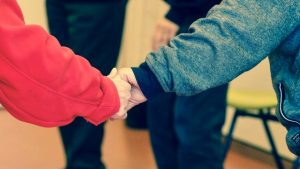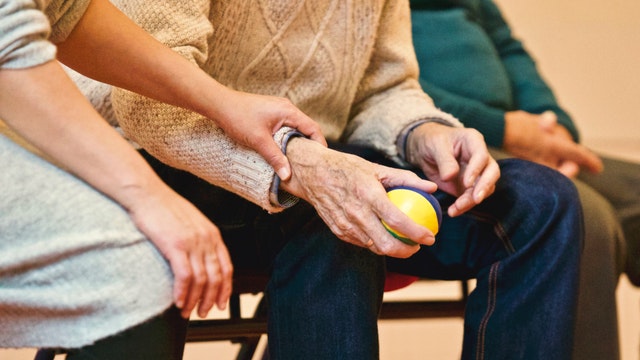On average, a meditation session runs for 10 minutes. For starters, a minute is recommended then you add up 1-minute increments thereafter. As you sit and open up your chest to the sky, you notice how your position could get uncomfortable. Suddenly, you feel tingling sensations on the part of your body that you’re sitting on simply because you’re not used to just sitting still. The parts that are in contact with the floor such as your buttocks, knees, and ankles start to get numb.
As you feel this, you would, most often than not, automatically change positions to facilitate circulation. Don’t worry. This is normal, and it’s not just you that tends to feel this way. It is felt by almost everybody.
Physically and scientifically, this is due to compromised blood flow resulting from the pressure to the organs, muscle fibres, ligaments, and tendons to gravity. The same principle applies to how pressure sores develop when the body assumes the same position for a prolonged period as with the case of most elderly.
WHY ARE THE ELDERLY MORE SUSCEPTIBLE IN DEVELOPING PRESSURE SORES
A geriatric patient, first and foremost, has limited mobility. When you grow old, physical capacity deteriorates, decreasing the body’s efficiency in terms of performance. One of them is the ability to practice independence. Because of the weakening musculoskeletal system, they start to need another person’s assistance when going up and down the stairs, going to the toilet, and doing an errand.
Another common reason is diminishing synovial fluid production. This semi-viscous fluid, synovial fluid, serves as a lubricant for easy movement of joints.
Arthritis resulting from surfacing ailments and backlash of unhealthy eating habits, during the younger years, also attacks the joints. Depending on how this adult shifts bad habits into embracing a healthier lifestyle, this may speed up drastically which may lead to joint stiffness.

Difficulty performing the usual range of motion by a certain joint may result in a lack of exercise or a lack of interest to do so. Somehow, this paves the way for adopting a sedentary lifestyle.
A sedentary lifestyle just leads to a lot of things. Compromised blood flow, diminishing skin elasticity, and being prone to dehydration are all contributing factors to pressure sores through pressure care training.
WHAT ARE PRESSURE SORES?
Pressure sores or pressure ulcers result from excessive sitting or lying down in the same position. People, most especially the aged ones with weak, dry, and thin skin, are prone to have this when they have decreased range of motion, poor blood circulation, and if they are on bed rest.
While this may result from the poor condition of the skin and immobility, it may also be because of injury, part of rehabilitation, temporary medical intervention, and negligence of the caregiver. A good pressure relief cushion, recommended by a doctor or a specialist can be the easiest way to relieve the pressure sores.
HOW DO YOU CARE FOR PRESSURE SORES?
In general, caring for pressure sores is centred on facilitating proper blood circulation. Meaning, there should be no part of the body compressed too much that oxygen becomes inaccessible to access. Therefore, any intervention should have this as the main priority.
Meanwhile, here are important interventions you can do too:
- Positioning and Turning – alleviate bony prominences from ending up necrotic or having an ulcer such as the occiput (back part of the head), sacrum, and the heels. Do this maybe every 15-20 minutes. On the other hand, turning has to be done at least every two hours.
- Bed bath – Keep the body clean by giving it a bed bath considering the limitations of an intervention, injury, and doctor’s orders. This stimulates proper blood circulation, ensuring faster healing of cold, clammy, dry skin. Good hygiene helps in maintaining intact skin as well, avoiding breakages.
- Massaging with oil – To avoid the skin from getting dry and weak, massage the prone area to promote proper blood flow.
- Wearing loose, cotton clothes – It’s best to wear this kind of material and style so that body circulation is not restricted at any point. If the clothes are too tight, it makes harder for the blood vessels to flow smoothly. Restrictive clothing may also induce stress at one point since it compromises freedom of the limbs and proper circulation.
PRESSURE CARE FOR THE ELDERLY
Meanwhile, as for the elderly, who needs a special arrangement, all four mentioned as a general intervention should be considered with the following:
- A little bit of exercise – Walking is the simplest thing they can do but to some, they could be insisting on attending a dance class. If the pressure sores are present already, it’s important to dress it properly. Clean the wound thoroughly.
- Usage of a special bed – There are special mattresses that cater to an affected elderly’s pressure sores or just to prevent it in the first place. There are 3 types of which can help in preventing bed sores: (1) Single or dual-layer memory foam, (2) Multi-layer memory foam or a combination of memory foam and air, or (3) alternating air. These different types of mattresses will be considered depending if the patient is high-risk or not and on how extensive their pressure injuries are.
